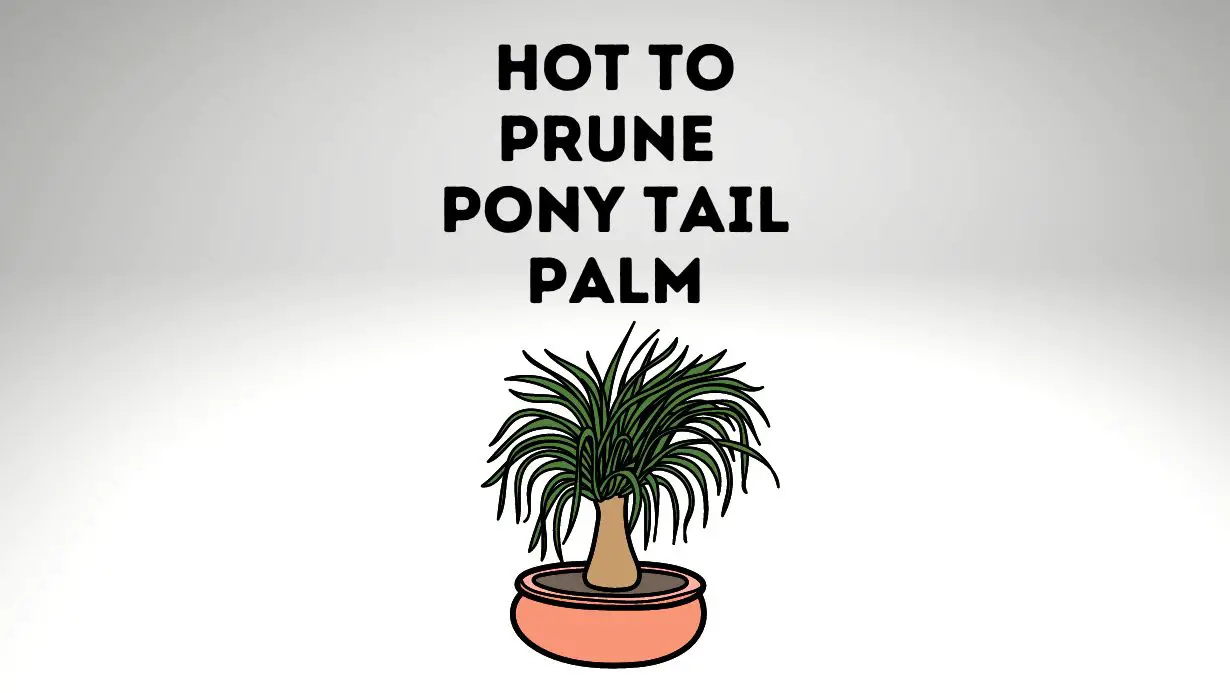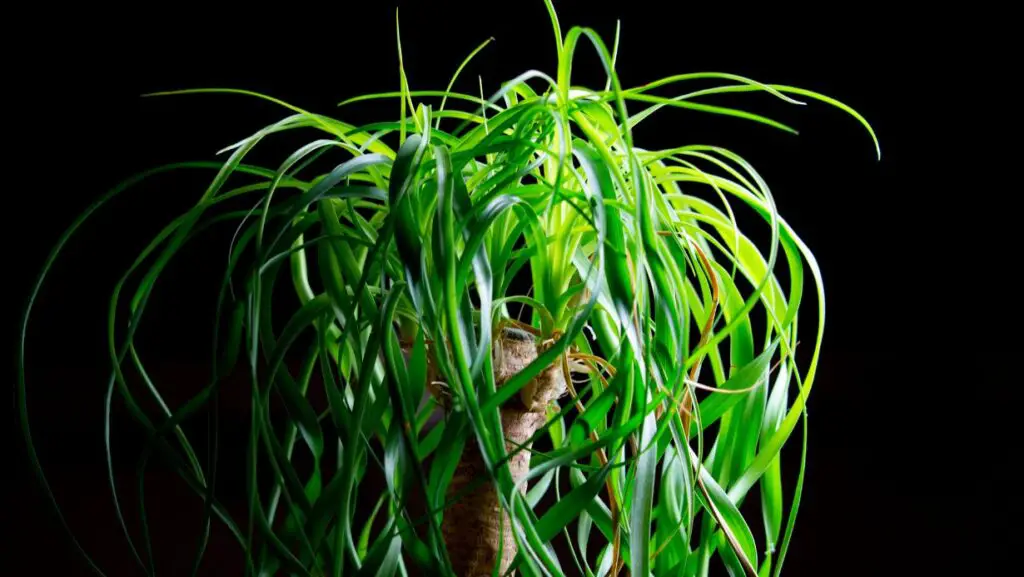
If you have a ponytail palm plant, you may wonder how to prune and trim it properly. After all, this type of plant can get somewhat unruly if left to its own devices! Never fear, though – with some know-how, it’s easy to keep your ponytail palm plant looking neat and tidy. In this blog post, we’ll walk you through how to prune and trim a ponytail palm plant. We’ll also give you some tips on how to prevent your plant from getting overgrown in the first place.
What is a Ponytail Palm?
ponytail palm Scientific name Beaucarnea recurvata, also known as elephant’s foot, is a species of plant in the family Asparagaceae
A ponytail palm is a type of succulent plant that stores water in its leaves. It’s native to Mexico and Central America but can be grown in other parts of the world. The plant gets its name from its long, thin leaves that resemble a ponytail.
Ponytail palms are low-maintenance plants that don’t require much care. They’re drought-tolerant and can survive in low-light conditions. Ponytail palms can live for decades with proper care.
Prune your ponytail palm when the plant starts to look overgrown or leggy. Use sharp, clean shears to cut off any dead or dying leaves.
You can also trim back the leaves to shape the plant. Be careful not to cut too deeply into the trunk, as this can damage the plant.
When and How to Prune a Ponytail Palm?
Ponytail palms are unique and interesting-looking plants that are native to Mexico. They get their name from their long, cascading leaves that resemble a ponytail. Ponytail palms are slow-growing plants that can reach up to 15 feet tall. They are typically used as houseplants or in outdoor gardens in warm climates.
Pruning a ponytail palm is relatively easy and does not require much experience. The most important thing to remember is never to cut off the top of the plant, as this will damage it beyond repair when pruning; always cut at an angle so water can drain properly and avoid rot.
The best time to prune a ponytail palm is in late winter or early spring before new growth begins. This will give the plant time to recover and produce new development for the upcoming growing season. If you need to remove diseased or damaged leaves, you can do so at any time of year.
To prune your ponytail palm, remove any dead or dying leaves. Then, cut back any long or leggy branches by about one-third of their length.
If desired, you can also thin out the plant by removing some of the smaller side branches. Eventually, trim off any brown or yellow leaves starting to turn color.

The Different Ways You Can Trim a Ponytail Palm
You can trim a ponytail palm in many ways, and the method you use will largely depend on the desired look you are going for. If you want to keep your ponytail palm looking neat, then you must trim it regularly. Here are some different ways that you can cut a ponytail palm:
-Shearing is a great way to keep your ponytail palm looking manicured and tidy. To shear your palm, use sharp pruning shears to trim away any excess growth evenly.
-Topping your ponytail palm can give it a more tree-like appearance. To top your palm, cut off the main stem about 6 inches below the crown of the leaves. New branches will sprout from the cut area, giving your plant a fuller look.
-Pruning: Pruning is necessary if you want to control the shape of your ponytail palm. Remove any unwanted or excess growth as required. Be sure to use sharp pruning shears, so you don’t damage the plant.
Pros and Cons of Pruning and Trimming a Ponytail Palm
When it comes to pruning and trimming a ponytail palm, there are both pros and cons that you should consider.
Let’s take a closer look:
Pros:
Pruning and trimming can help to encourage new growth.
Pruning and trimming can keep your plant looking its best.
Pruning and trimming can help to control the size of your plant.
Pruning and trimming can prevent your plant from becoming too large.
Cons:
Pruning and trimming can damage your plant if not done correctly.
Over-pruning can be harmful to your ponytail palm.
How to Care for a Ponytail Palm After Pruning or Trimming
Ponytail palms are a type of succulent that stores water in its leaves, making it a drought-tolerant plant. They are slow-growing and can live for many years with proper care.
Ponytail palms can be pruned or trimmed at any time of year, but it is best to do so in the spring or summer when the plant is actively growing. Always use clean, sharp tools when pruning or trimming your ponytail palm to avoid damaging the plant.
After pruning or trimming your ponytail palm, it is essential to care for the plant properly to ensure it grows healthy and strong. Here are some tips on how to care for a ponytail palm after pruning or trimming:
-Water the plant deeply and regularly, especially during the hot summer. Allow the soil to dry out slightly between watering.
-Fertilize your ponytail palm every two weeks during the growing season with a balanced fertilizer such as 10-10-10.
-Place your ponytail palm in an area that receives bright, indirect light. Too much direct sunlight can scorch the leaves and cause them to drop off.
-Protect your ponytail palm from cold temperatures. It is best to keep the plant indoors or in a greenhouse during winter.
Following these tips can help your ponytail palm recover quickly from pruning or trimming and encourage new growth.
Conclusion
Pruning and trimming a ponytail palm plant is easy and can help keep your plant healthy and looking its best. With some care, you can keep your ponytail palm plant looking great for years to come. Thanks for reading, and we hope you have a great day!
